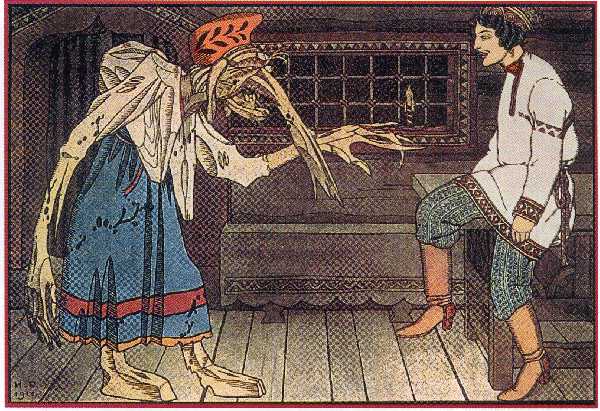Description
In the vast and rich tradition of Russian art, Ivan Bilibin's work occupies a prominent and distinctive place, not only because of its unique style but also because of its ability to reinterpret the elements of the Slavic folklore through a captivating and detailed visual approach. The painting entitled "Illustration for 'The story of three real divas and the son of the priest Ivashko'" of 1911, is an amazing example of his mastery and his dedication to capturing the legends and popular stories of Russia.
Ivan Bilibin, one of the most renowned graphic artists of his time, is mainly known for his illustrations of Russian popular stories. Its artistic style is characterized by meticulous attention to detail, defined lines and a deliberate and symbolic use of color. These qualities are evident in the aforementioned illustration, in which Bilibin manages to converge narrative and decorative elements with great skill.
The composition of the painting is notable symmetry and harmony, qualities that characterize many of the bilibin works. In the center of the scene, an architectural structure predominates that evokes the typical elements of traditional Russian architecture, with details that remember the ornamentations of the icons and medieval manuscripts. The safe and precise line of the artist gives the work of an almost decorative character, while maintaining a deep and rich narrative.
The use of color in this work is another aspect that deserves to stand out. The soft and terrible tones, combined with more vivid and contrasting colors, create a magical atmosphere that transports the viewer to a fantasy and legend world. The chromatic palette reflects not only the mystical atmosphere of the story, but also the visual inheritance of Russia, with its predominant ocher, green and blue tones.
Bilibin prolific uses ornamentation, especially at the edges and costumes of the characters, which is a clear influence of the tradition of Byzantine art, as well as the rich decoration of embroidery and Russian folk suits. This use of patterns and thorough details not only beautifies the work, but also adds additional layers of cultural and symbolic significance.
As for the characters, although from a visual inspection of the work in question, human figures are not evidenced as central protagonists, it is more than likely that architecture and natural elements are designed to frame the presence of the characters of the literary story in question . The direct absence of these figures in the preliminary vision can be interpreted as an invitation to imagine and as a representation of the context in which their stories develop.
To better contextualize this work within the author's repertoire, it is essential to mention other iconic bilibin creations, such as his illustrations for "the story of the Saltán" by Aleksandr Pushkin, where he uses similar techniques and styles, thus consolidating his own visual language that has resonated throughout generations.
Bilibin achieves, through his art, not only to illustrate but to create portals towards magical and forgotten worlds, preserving and revitalizing Russia's oral and visual traditions. The painting "Illustration for 'The history of three real divas and the son of the priest Ivko'" is a forceful proof of his ability to merge visual and narrative poetry in harmony, a true tribute to his legacy and the rich cultural tradition that what inspired.
KUADROS ©, a famous paint on your wall.
Hand-made oil painting reproductions, with the quality of professional artists and the distinctive seal of KUADROS ©.
Art reproduction service with satisfaction guarantee. If you are not completely satisfied with the replica of your painting, we refund your money 100%.

